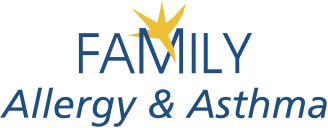When It’s More Than Just a Cold
How to recognize the warning signs of allergies in your children.
By Daniel Garcia, M.D
Children often can’t tell us how their bodies are feeling or why they feel sick. It’s often up to “Dr. Mom or Dad” to tell the difference between a simple cold or a rash and a serious, life-threatening allergy.
Fortunately, there are some basic rules of thumb you can follow on whether or not you should head to the store for some over-the-counter medicine, schedule a visit for an allergy test, or go directly to the emergency room. Most are fairly common sense, and probably simpler than you might think:
Food Allergies:
When your child is a baby and starting solid foods, there is a reason why pediatricians often recommend introducing one new food at a time, at least 3-4 days apart. If after eating a new food, your child develops swollen lips or tongue, vomiting/diarrhea, breathing difficulties, or loses consciousness you can be reasonably sure which food caused the reaction. If your child exhibits any of these symptoms, call 911. In a baby, these symptoms can be a sign of anaphylaxis, a life-threatening allergic reaction that can cause shock, narrowing of the airways, rapid weak pulse and a dangerous drop in blood pressure. An immediate Epinephrine injection will be required, and likely further allergy testing.
As your child gets older, figuring out the source of an allergy can be even more difficult. Children can develop new allergies over time, or react to certain chemical compounds present in foods. Your best defense is to pay attention to your child’s complaints. If they start to exhibit a mild rash, have the feeling of itching or swelling in their mouth, and are sick to their stomach after eating a certain food, call us to schedule an allergy test. If the symptoms are severe, and your child also starts vomiting excessively or having breathing difficulties, don’t delay getting to the emergency room for immediate treatment.
There are more than 160 foods that have been shown to cause food allergies. Some children are so allergic, they can react to food particles in the air, when they haven’t actually eaten the food. Our testing can help you pinpoint any allergenic foods, measure the allergy’s intensity, and identify other foods that may cause problems.
Dog and Cat Allergies:
A cold may last for a few days, but children who are allergic to family pets often present very differently. Children may get a rash, and even redness or itching where your pet has licked them. They may sneeze or start coughing when your pet is nearby or have chronic sinus infections. In between the sinus infections, they may have a persistent nasal drip and runny nose. Some children may begin to have asthmatic symptoms that make it difficult for them to breathe. Any of these symptoms are grounds to bring in your child for an allergy test.
Bee Stings:
Anyone getting a bee sting will get redness at the site of the sting and a little bit of swelling, and of course, pain. Usually all that is needed is an aspirin and a little ice pack at the sting site.
A sting can be more serious when it is accompanied by unusual amounts of swelling, hives, wheezing or difficulty breathing. If your child experiences these symptoms, get them to an emergency room immediately for an Epinephrine injection. Further allergy testing will be required.
Seasonal and Environmental Allergies:
If your child starts having a runny nose, itchy eyes, coughing and a post nasal drip right as the seasons change, and it lasts for more than 7-10 days, this is often a sign of seasonal allergies like hay fever. Allergic symptoms or sinus headaches during rainy periods can often be a sign of mold allergies.
Allergies to dust mites, feather bedding, or other environmental allergens can be more difficult to spot, as they are always present in the home. However, if your child has frequent colds or sinus infections, followed by periods when they are better but still experiencing postnasal drip and a runny nose with clear mucus, then allergies might be the culprit. It’s important to get allergy testing so you know what you can eliminate in your home.
Asthma:
Asthma can develop suddenly, triggered by an allergen, or can develop slowly over time. Regardless, if your child is experiencing shortness of breath, wheezing, or a feeling of chest tightness and difficulty breathing in air through their lungs, there is a good chance their allergies could lead to asthma. They should get immediate allergy testing and treatment, to keep their asthma attacks from becoming worse, or even life threatening. The National Institutes of Health recommend all children with asthma be evaluated for allergic triggers.
Allergic reactions can range from annoying to very serious, debilitating conditions. If you have a question in your mind about your child’s symptoms, contact your pediatrician. And don’t hesitate to contact us directly, either. We’re always happy to test your child and tell youwhich allergies your child may be facing. When it comes to allergic reactions, knowledge is the key to living better and breathing better in your home.
** This article should not be considered a substitute for seeing a physician. It is provided on an educational basis only. Please contact our contact our office, or your own physician to get specific advice on your family’s medical concerns.


